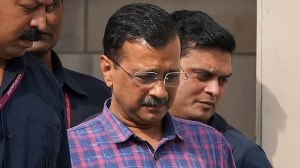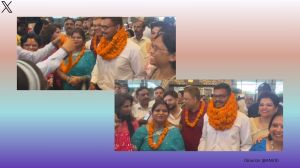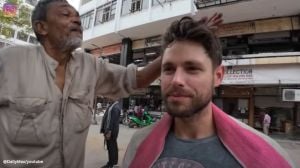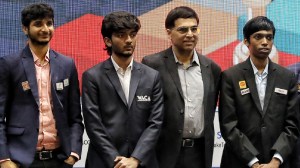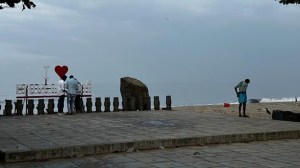- India
- International
Explained: How San Francisco is leading the way towards herd immunity
Experts believe San Francisco’s vaccination drive is largely to thank for its success in combating the virus.
 While San Francisco appears to be leading the race towards herd immunity, some smaller countries and cities around the country are close behind. (AP)
While San Francisco appears to be leading the race towards herd immunity, some smaller countries and cities around the country are close behind. (AP)With several parts of the United States gradually easing coronavirus restrictions and moving towards some semblance of pre-Covid normalcy, top epidemiologists have predicted that San Francisco, California will be the first major American city to arrive at the possible endgame of the pandemic — herd immunity.
Experts believe San Francisco’s vaccination drive is largely to thank for its success in combating the virus. So far, nearly 80 per cent of all adults have already received at least one dose of the vaccine in the city, according to San Francisco health department data.
Apart from having one of the highest vaccination rates in the country, San Francisco and its suburbs have also been more cautious about easing restrictions and reopening businesses — a far cry from a number of US states that have forged ahead to rapidly remove restrictions, despite warnings by health officials.
“This is our moment to put the pandemic behind us,” Dr. Grant Colfax, San Francisco’s health director, told NBC news last month. “It’s clear that the vaccines are our way out of this.”
But first, what exactly is herd immunity?
Herd immunity refers to preventing an infectious disease from spreading by immunising a certain percentage of the population. While the concept is most commonly used in the context of vaccinations, it can also be attained when a vast majority of a population becomes immune to the disease after being infected.

Since the coronavirus pandemic first began in 2020, the vaccine threshold for determining whether a population has hit herd immunity has varied. For instance, a briefing from the Yale School of Medicine estimated that transmission of the virus would significantly slow down once 60 to 70 per cent of the population was immune. However, with the emergence of new and often more virulent variants of the virus, some experts now say 80 per cent and more of the population will have to be vaccinated before herd immunity is attained.
So far in the United States (as of June 9), 51.7 per cent of the population has received at least one dose of the coronavirus vaccine, while only 42.4 per cent are fully vaccinated. This falls short of President Joe Biden’s goal of at least partially vaccinating 70 per cent of adults by July 4 — a crucial milestone to reach possible nationwide herd immunity.
Newsletter | Click to get the day’s best explainers in your inbox
With widespread vaccine hesitancy across the country coupled with a growing number of new variants, some fear that herd immunity may never be attained. Overall, despite over half of the US’ adult population receiving at least one dose of the vaccine, public health experts and scientists have largely agreed that crossing the herd immunity threshold is not an attainable goal for the country as a whole — at least in the foreseeable future. Instead, experts say that the virus is likely to subside into a more manageable threat that will continue to circulate for years to come, a New York Times report stated.
But cities like San Francisco offer a glimmer of hope.
How many people have been vaccinated in San Francisco?
A total of 6,24,528 residents of the city have received at least one dose of a Covid vaccine so far. To put this in perspective, there are a total of 7,91,131 people who are eligible for the vaccine in San Francisco. This means that over 79 per cent of people over the age of 12 have received at least one dose of the vaccine, while around 68 per cent have received both doses, according to data released by the San Francisco health department,
But given that the immunity threshold for herd immunity is a moving target, a more reliable figure would be the city’s caseload as well as its hospitalisations and daily deaths. San Francisco’s cases peaked on January 4th, with a total of 560 infections and has since been on the decline. It has the advantage of having ramped up vaccinations when its caseload was relatively low. In comparison, Los Angeles reached its peak on December 26, when more than 26,000 cases were recorded in a single day.
The state of California has consistently been predicted to reach herd immunity as a whole by mid- to-late July. However, following a dip in vaccination numbers, it may take longer. The state is administering around one million doses every five days, according to a report by ABC 7. With the state set to reopen its economy on June 15, the real test will start then. If cases remain low, herd immunity may not be far off.
In the fight against Covid-19, what makes San Francisco different?
Mary Ellen Carroll, the director of San Francisco’s Department of Emergency management, announced that the city was launching a “national model for equitable vaccine distribution”. Under this system, a door-to-door vaccination drive has been conducted to help inoculate homebound seniors and people with disabilities to “help push San Francisco through the last mile of our vaccine program”.
Apart from pulling off a particularly successful vaccination campaign, the city also enjoys certain other advantages. In an interview with The Guardian, Dr George Rutherford, professor of epidemiology at University of California, pointed out that the city also had a few children in its population as compared to other places. This means that a larger percentage of its residents are eligible for Covid vaccines. The city’s compact geographical layout — wherein a majority of its residents are packed into 47sq miles — also allowed health workers to carry out an effective door-to-door vaccination campaign, Rutherford added.
Officials in the city were quick in their response to the pandemic, imposing strict measures to mitigate its impact, which residents widely embraced. “This culture and support for public health, and infrastructure for public health, is deeply embedded in San Francisco, largely due to our response to the HIV/AIDS epidemic,” Dr. Grant Colfax, San Francisco’s health director, told NBC news. “That’s ingrained in our cultural DNA.”
Which other cities are showing signs of possible herd immunity?
While San Francisco appears to be leading the race towards herd immunity, some smaller countries and cities around the country are close behind. Cities such as Albuquerque, New Mexico; Portland, Maine; and San Diego are seeing similarly encouraging signs.
More Explained
Must Read
EXPRESS OPINION
Apr 23: Latest News
- 01
- 02
- 03
- 04
- 05




















